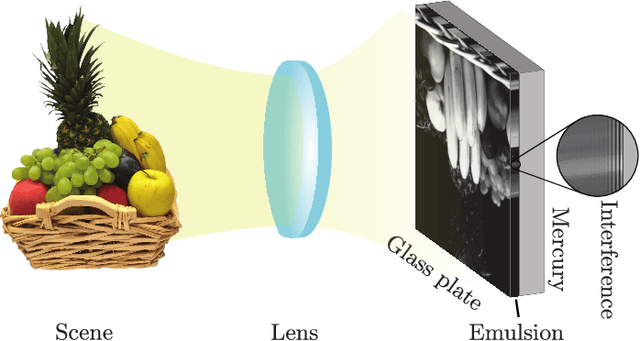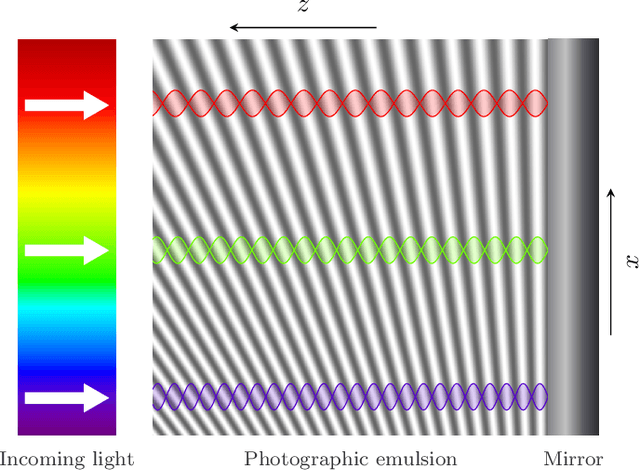Lippmann Photography: A Signal Processing Perspective
Paper and Code
Jul 13, 2022



Lippmann (or interferential) photography is the first and only analog photography method that can capture the full color spectrum of a scene in a single take. This technique, invented more than a hundred years ago, records the colors by creating interference patterns inside the photosensitive plate. Lippmann photography provides a great opportunity to demonstrate several fundamental concepts in signal processing. Conversely, a signal processing perspective enables us to shed new light on the technique. In our previous work, we analyzed the spectra of historical Lippmann plates using our own mathematical model. In this paper, we provide the derivation of this model and validate it experimentally. We highlight new behaviors whose explanations were ignored by physicists to date. In particular, we show that the spectra generated by Lippmann plates are in fact distorted versions of the original spectra. We also show that these distortions are influenced by the thickness of the plate and the reflection coefficient of the reflective medium used in the capture of the photographs. We verify our model with extensive experiments on our own Lippmann photographs.
 Add to Chrome
Add to Chrome Add to Firefox
Add to Firefox Add to Edge
Add to Edge